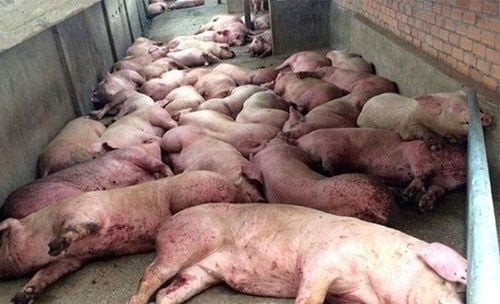 |
| A pig farm in a rural area in central Việt Nam. At least five pigs had died and samples of meat of the dead pigs were tested positive with African swine fever virus at some farms in Đà Nẵng city’s Hoà Vang suburban district from July 30 to August 8. Photo courtesy of Hoà Vang district's people's committee |
At least five pigs died and samples from the meat tested positive for African swine fever virus at farms in two communes of Hoà Ninh and Hoà Phong of central city Đà Nẵng’s Hoà Vang suburban district.
Vice Chairman of the district, Phan Duy Anh said ten out of 36 pigs at a farm in Hoà Ninh Commune were found ill with subcutaneous bleeding and were not eating in late July. Two out of the 10 were found dead on July 30 and the virus was detected in samples of the meat.
He said three other pigs in villages of Hoà Phong Commune died at farms between August 5-8 and the virus was also tested for in meat samples.
The district said 40 pigs had been killed and buried under strict regulations on the epidemic disease of the ministry of health and the central veterinary department.
The district has isolated the virus-infected communes and banned all slaughter, as well as stopping any moving in and out of pigs to try and contain African swine fever.
More than 2,000l of chemicals have been used for sterilisation at all pig farms in 11 communes across the district.
It’s the first cases of African swine fever virus found in the central city.
According to the ministry of agriculture and rural development, African swine fever has been reported in 48 out of 63 provinces and cities in Việt Nam, affecting about two million pigs or 6.5 per cent of the country’s pig population since the first outbreak of the virus was detected in the northern province of Hưng Yên in 2019.
More than 3,000 communes in about 300 districts in 48 provinces and cities nationwide have found the virus in pigs.
Đà Nẵng reported that 48,000 out of total 50,000 pigs are raised at farms in Hoà Vang district, but it only provides 20 per cent of daily demand, so 80 per cent of pork is supplied by neighbouring provinces. — VNS